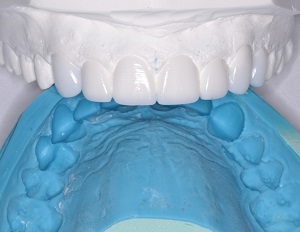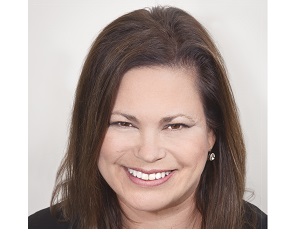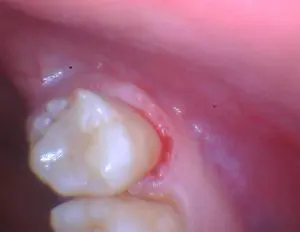Por el Dr. Josh Wren
La serie Odontología Heroica rinde homenaje a los profesionales de la salud bucodental que, como el fundador de PULPDENT, el Dr. Harold Berk, han hecho de su misión salvar dientes y ayudar a los pacientes a vivir cómodamente y sonreír con confianza.
Stacey es una gemela de 8 años a la que le faltan dientes de forma congénita, lo cual no es infrecuente en gemelos. También es mi vecina y la hija de la mejor amiga de mi mujer. Cuatro años antes, a Stacey le restauraron los molares primarios hipocalcificados y cariados bajo anestesia general debido a su gran ansiedad. Se presentó en mi consulta con un primer molar permanente superior derecho hipocalcificado (diente n.º 3) (Figura 1) que también tenía caries profundas. El molar parecía irrecuperable, y otro dentista recomendó la extracción, pero a sus padres les preocupaba con razón que perdiera otro diente.

Mis preocupaciones eran la capacidad de restauración del diente, el estado de la pulpa y la posible longevidad si colocaba una restauración directa en lugar de una corona de acero inoxidable. La madre de Stacey no quería otra corona de acero inoxidable, sobre todo en un diente permanente.
No quería colocar un material inerte tradicional en este diente comprometido. Los composites tradicionales están sujetos a fugas, y evitar las microfugas era imprescindible para garantizar el éxito a largo plazo. Mis materiales de elección fueron MTA, ACTIVA Base/Liner y ACTIVA Restorative para la restauración final, debido a su resistencia al desgaste, tenacidad y liberación de minerales que favorecen el sellado y evitan las fugas marginales.
Con una suave guía de comportamiento y óxido nitroso, el tratamiento se completó sin ningún problema de comportamiento. Me preocupaba la exposición pulpar o la respuesta pulpar al traumatismo de la preparación de la cavidad profunda y los materiales, por lo que adopté un prudente enfoque en dos pasos. Durante la cita inicial de excavación, dejé más dentina infectada de la que normalmente dejaría, apliqué un minuto de fluoruro de diamina de plata y temporicé con un cemento de ionómero de vidrio (Figura 2).

A los dos meses, volví a abrir la lesión cariosa, eliminé más dentina infectada (Figura 3) hasta llegar a dentina semisólida (Figura 4), y coloqué NuSmile NeoMTA (Figura 5), que es impenetrable y resiste las fugas. Completé la restauración final con ACTIVA BioACTIVE-BASE/LINER y ACTIVA BioACTIVE-RESTORATIVE y confiaba en haber creado el mejor sellado posible contra las microfugas para una restauración directa.




He seguido este caso durante más de tres años. La pulpa sigue sana, no hay sensibilidad ni rotura marginal de los materiales de restauración ACTIVA. El diente no sólo está asintomático, sino que también hay pruebas radiográficas de una capa de dentina reparadora entre los materiales de restauración y la cámara pulpar (figura 7). Una vez más, vemos que el diente puede realmente repararse a sí mismo con el diagnóstico correcto, un plan de tratamiento conservador y el uso de materiales bioactivos.

Acerca del Dr. Josh Wren
El Dr. Wren ejerce la odontopediatría en Brandon, Mississippi. Es el fundador de los Seminarios de Odontopediatría, que sirven para educar a los dentistas generales en temas relacionados con la odontopediatría mediante seminarios basados en conferencias y talleres prácticos.




